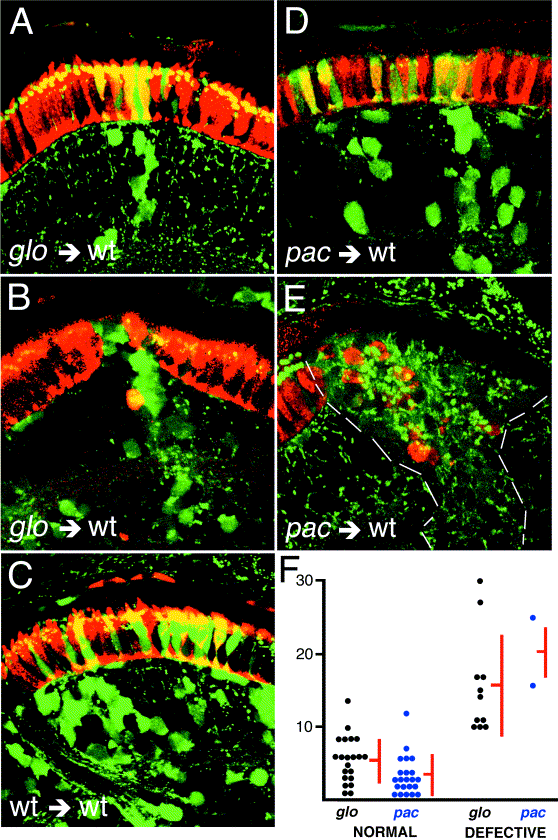Fig. 6 Mosaic analysis of the glass onion phenotype at 3 dpf. The phenotype of glom117/m117 mutant photoreceptor cell clones in the environment of the wild-type retina depends on clone size. In small clones, mutant double cones (yellow) display proper morphology and localize to the photoreceptor cell layer (A). In larger clones, the photoreceptor cell layer is frequently disrupted and ectopic photoreceptors are sometimes observed (B). This is never seen in control experiments when wild-type clones develop in the environment of wild-type retina regardless of clone size (C). When pactm101b mutant clones develop in the environment of the wild-type retina, the photoreceptor cell layer remains normal (D). Rare exceptions to this are seen in the case of particularly large clones (E). The correlation of photoreceptor cell layer abnormalities with clone size is quantitated for mutant to wild-type transplants in (F). Each dot in (F) represents a donor-derived clone that was physically separate from other donor-derived clones. Clone size is plotted on the vertical axis. Larger clones have a clear tendency to cause patterning defects in the retina. Data for glom117 and pactm101b alleles are plotted in separate columns. Donor-derived cell clones are in green, while double cones are stained with the Zpr-1 antibody and are depicted in red. Donor-derived double cones appear yellow. Dashes in (E) outline a large mutant clone in otherwise wild-type retina.
Reprinted from Developmental Biology, 259(1), Malicki, J., Jo, H., and Pujic, Z., Zebrafish N-cadherin, encoded by the glass onion locus, plays an essential role in retinal patterning, 95-108, Copyright (2003) with permission from Elsevier. Full text @ Dev. Biol.

